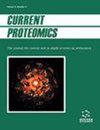巨蛛毒液的蛋白质组学、肽组学和转录组学分析
IF 0.5
4区 生物学
Q4 BIOCHEMICAL RESEARCH METHODS
引用次数: 0
摘要
蜘蛛毒液具有丰富的多肽和蛋白质多样性,在新药开发和农化中发挥着重要作用。大腹蛇的毒液对受害者有很强的毒性。目的:对主要生活在云南的雅氏巨蛛(Macrothele yani)的毒液蛋白和肽谱进行全面研究。利用毒腺的RNA测序和基于液相色谱-电喷雾电离-串联质谱(LC-ESI-MS/MS)的毒液蛋白质组学,我们首次概述了Macrothele yani产生的肽和蛋白质。共分析116条多肽序列,匹配43个同源蛋白,其中38.10%为毒素蛋白。采用HiSeq-2000 (Illumina)进行高通量测序,然后进行从头组装。结果,在可用的数据库中注释了301,024个相似的蛋白质序列。共鉴定出68条毒素相关序列,序列比较分析表明,这些序列存在不同类型的酶和毒素样基因,包括乙酰胆碱酯酶、透明质酸酶、富含半胱氨酸的分泌蛋白(CRISP)、Astacin金属蛋白酶等毒液成分。蜘蛛毒液是自然界中非常丰富的资源。对其进行分析,以确定其在病理生理中的功能。通过对大蜘蛛毒液推定成分的分类和表征,获得了具有潜在医学和生物学应用价值的分子模板,为今后对大蜘蛛毒液的进一步研究奠定了基础。本文章由计算机程序翻译,如有差异,请以英文原文为准。
Proteomics, Peptidomics and Transcriptomic Analysis of the Venom from the Spider Macrothele yani (Mygalomorphae: Macrothelidae)
Spider venom show abundant diversity in both peptides and proteins, which play essential roles in new drug development and agrochemistry. The venoms of Macrothele yani species have strong toxicity on the victims.
Objective: The purpose of this study is to comprehensively characterize the profile of venom proteins and peptides of spider Macrothele yani mainly inhabiting in Yunnan province, China.
Using a combination of RNA sequencing of the venom glands and venom proteomics based on Liquid Chromatography-Electrospray Ionization-Tandem Mass Spectrometry (LC-ESI-MS/MS), we provide the first overview of the peptides and proteins produced by Macrothele yani.
A total of 116 peptide sequences were analyzed, and 43 homologous proteins were matched, of which 38.10% were toxin proteins. High-throughput sequencing by the HiSeq-2000 (Illumina), followed by de novo assembly. As a result, 301,024 similar protein sequences were annotated in the available databases. A total of 68 toxins-related sequences were identified, comparative sequence analyses of these sequences indicated the presence of different types of enzymes and toxin-like genes, including Acetylcholinesterase, Hyaluronidase, cysteine-rich secretory proteins (CRISP), Astacin metalloprotease and other venom components.
The venom of spider is a very abundant resources in nature. They were analyzed in order to determine their function in pathophysiology. Molecular templates with potential application value in medical and biological fields were obtained by classifying and characterizing the presumed components about spider venom of Macrothele yani, which laid a foundation for further study of the venom in the future.
求助全文
通过发布文献求助,成功后即可免费获取论文全文。
去求助
来源期刊

Current Proteomics
BIOCHEMICAL RESEARCH METHODS-BIOCHEMISTRY & MOLECULAR BIOLOGY
CiteScore
1.60
自引率
0.00%
发文量
25
审稿时长
>0 weeks
期刊介绍:
Research in the emerging field of proteomics is growing at an extremely rapid rate. The principal aim of Current Proteomics is to publish well-timed in-depth/mini review articles in this fast-expanding area on topics relevant and significant to the development of proteomics. Current Proteomics is an essential journal for everyone involved in proteomics and related fields in both academia and industry.
Current Proteomics publishes in-depth/mini review articles in all aspects of the fast-expanding field of proteomics. All areas of proteomics are covered together with the methodology, software, databases, technological advances and applications of proteomics, including functional proteomics. Diverse technologies covered include but are not limited to:
Protein separation and characterization techniques
2-D gel electrophoresis and image analysis
Techniques for protein expression profiling including mass spectrometry-based methods and algorithms for correlative database searching
Determination of co-translational and post- translational modification of proteins
Protein/peptide microarrays
Biomolecular interaction analysis
Analysis of protein complexes
Yeast two-hybrid projects
Protein-protein interaction (protein interactome) pathways and cell signaling networks
Systems biology
Proteome informatics (bioinformatics)
Knowledge integration and management tools
High-throughput protein structural studies (using mass spectrometry, nuclear magnetic resonance and X-ray crystallography)
High-throughput computational methods for protein 3-D structure as well as function determination
Robotics, nanotechnology, and microfluidics.
 求助内容:
求助内容: 应助结果提醒方式:
应助结果提醒方式:


